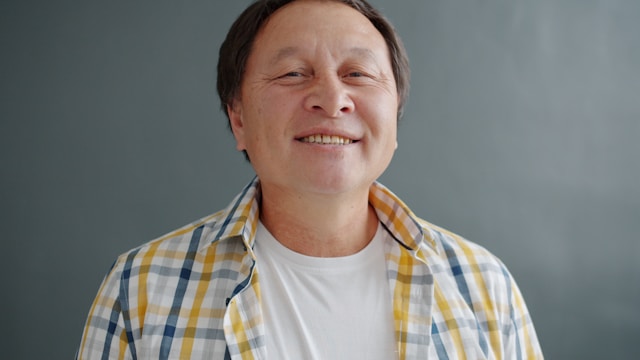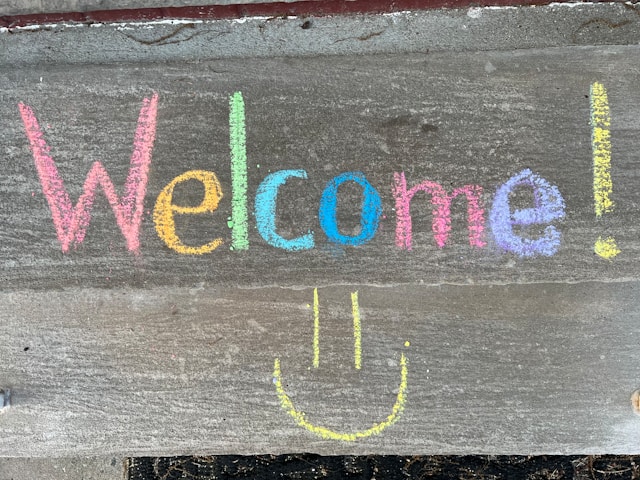“The more you oppose your thoughts and emotions, the more you will have them.” – David Carbonell
Anxiety can feel overwhelmingly powerful and demanding of your full attention. When you sense it creeping in, you might think your only option is to push it away, distract yourself, or try to control it. But what if there was another way? What if, instead of fighting your anxiety, you welcomed it in?
This is the counterintuitive approach at the heart of acceptance therapy for anxiety, which we practice at Life Counseling Institute in Willowbrook and Park Ridge. It might sound strange at first. Why would anyone invite their most uncomfortable emotional experience to stick around? The answer lies in understanding a fundamental truth about anxiety: the more you resist it, the stronger it becomes. Many people come to therapy having spent years trying every possible method to eliminate their anxiety, only to find it growing more persistent and intrusive.
When you deny anxious feelings in the moment and distract yourself until you think they’ve disappeared, your anxiety isn’t satisfied. It may as well whisper that famous line from The Terminator: “I’ll be back.” And sure enough, it will reappear, never at a convenient time. It might show up in the grocery aisle at your local Mariano’s, waiting for you as you walk into an important meeting, or right when you lie down to sleep at night. When you push anxiety away, it always pushes back harder.
Struggling with the need to control everything?
Our therapists in Willowbrook and Park Ridge specialize in helping clients find relief from control-driven anxiety using proven, evidence-based approaches.
Understanding why fighting anxiety makes it worse
The relationship between resistance and anxiety is well documented in psychological research. When you try to suppress anxious thoughts or avoid anxiety-provoking situations, you inadvertently create a cycle that reinforces the very thing you’re trying to escape. Your brain interprets your avoidance as confirmation that the threat is real and dangerous, which then amplifies the anxiety response.
Think about a time when someone told you “don’t think about pink elephants.” What happened? You probably immediately thought about pink elephants. The same principle applies to anxiety. When you tell yourself “I shouldn’t feel anxious” or “I need to stop worrying,” you’re actually directing more attention and energy toward the anxiety, making it more prominent in your awareness.
This pattern is incredibly common throughout the northwest and western Chicago suburbs, where high-achieving communities often create additional pressure to appear like you ‘have it all together.’ Traditional anxiety management often focuses on reducing or eliminating symptoms, but acceptance therapy offers a different path forward.
The paradox of acceptance
Here’s your other option, and it’s based on a powerful therapeutic approach: invite your anxiety right in. Open the door and give it a warm welcome, like a guest arriving for dinner.
When our therapists share this concept with clients, they’re often met with a raised eyebrow and visible confusion. It’s difficult for people to imagine why they should invite their least favorite emotional state to stick around. After all, anxiety feels terrible. It creates physical discomfort, racing thoughts, and can interfere with work, relationships, and sleep. Why on earth would you welcome it?
The answer is both simple and profound: acceptance doesn’t mean you like the anxiety or want it to stay forever. It means you stop wasting your energy fighting against something that becomes more powerful through resistance.
What acceptance actually looks like in practice
For the record, you’re more than welcome to not invite certain people to a party. We can discuss that later when we talk about boundaries. But since anxiety doesn’t respond well to boundaries, if you close the door, it will come in through the window. It doesn’t follow the social rules that other guests might.
So here’s what we want you to try. Stand right by the door and open it kindly when anxiety comes by for a visit. Like any intrusive person you know, it will probably be unpleasant and may stay longer than you’d prefer. But the key with anxiety is to welcome it when it arrives rather than fight it, and eventually the visits will become more manageable. You might even learn something valuable from them.
Most of the time, all you need to do is stop and observe the anxiety, acknowledging its presence without judgment. Make yourself as comfortable as possible while it’s there. While anxiety tries to tell you all its scary ideas and worst-case scenarios, you can nod your head politely, take some deep breaths, and keep on with your day.
This doesn’t mean you have to enjoy the experience. It simply means you’re no longer adding the exhausting layer of fighting against the feeling on top of the feeling itself. As David H. Rosmarin, associate professor of psychology at Harvard Medical School, explains, “when we feel anxious, it’s unhelpful to fight it — that makes it worse.” Research shows that our apprehension about anxiety itself often triggers a cascade effect, where the internal response to feeling anxious increases adrenaline flow and magnifies the perceived threat, ultimately causing more distress than the original anxiety.
The neuroscience behind acceptance
Understanding what happens in your brain when you practice acceptance can make this approach feel less mysterious and more practical. When you fight against anxiety, you activate the same stress response systems that the anxiety itself triggers. You’re essentially doubling down on your body’s alarm system.
Your brain’s amygdala, the region responsible for detecting threats, becomes even more activated when you respond to anxiety with fear or resistance. This creates a feedback loop where anxiety triggers fear of anxiety, which then intensifies the original anxiety. Over time, this pattern can become deeply ingrained.
In contrast, when you practice acceptance, you engage different neural pathways. The prefrontal cortex, which is the part of your brain responsible for rational thinking and emotional regulation, can remain more active and available. This allows you to observe your anxiety without becoming completely overwhelmed by it.
This neuroscience-based approach is what makes acceptance therapy effective.
How acceptance reduces anxiety over time
Eventually, you’ll find that anxiety’s visits become less intrusive. You’ll find yourself thinking, “There’s anxiety again. I see you, and I’ll just ride this out until you’re done,” similar to how you might tolerate a boring relative who tends to ramble. The anxiety might still show up, but it no longer controls your choices or derails your day.
Before you know it, the visits will decrease in frequency and intensity. Through acceptance of anxiety’s presence, it has significantly less power over you. This isn’t about giving up or resigning yourself to a life of anxiety. It’s about redirecting your energy from an unwinnable fight toward building the life you want, anxiety and all.
Many clients report that this shift feels counterintuitive at first but ultimately liberating. Instead of organizing their entire lives around avoiding anxiety (which never works anyway), they can focus on what truly matters to them.
Think about the activities, relationships, and goals you’ve been avoiding because of anxiety. Maybe you’ve turned down social invitations, passed on career opportunities, or stopped pursuing hobbies you once enjoyed. When you’re no longer consumed by the battle against anxiety, all that energy becomes available for living according to your values.
Practical steps for welcoming anxiety
So here’s the essential point: if you want to reduce anxiety’s control over your life, start by letting it in. Here are some practical ways to begin:
- Notice and name it. When you feel anxiety arising, simply acknowledge it: “I’m feeling anxious right now.” This simple act of naming creates a small but important distance between you and the feeling.
- Get curious instead of critical. Rather than judging yourself for feeling anxious (“I shouldn’t feel this way” or “What’s wrong with me?”), approach the experience with curiosity. Where do you feel it in your body? What thoughts are showing up? What is the anxiety trying to tell you, even if its message is exaggerated or unhelpful?
- Make room for the feeling. Imagine your anxiety as taking up space in a room. Instead of trying to shove it out the door, simply acknowledge that it’s there and that there’s enough room for both you and the anxiety. You can feel anxious and still do what matters to you.
- Continue with your values. This is perhaps the most important step. Anxiety will often tell you to avoid, escape, or play it safe. Acceptance means you acknowledge the anxiety and then make a conscious choice about your actions based on your values rather than your fears. For example, if you value connection but feel socially anxious about attending a friend’s gathering in downtown Park Ridge, acceptance doesn’t mean you magically stop feeling anxious. It means you notice the anxiety, make room for it, and still choose to go because connection matters to you. The anxiety might come along for the ride, but it’s no longer in the driver’s seat.
Zuly Ramirez, Licensed Clinical Professional Counselor (LCPC) and Assistant Clinical Director, who specializes in anxiety and OCD treatment using Acceptance and Commitment Therapy (ACT), explains the core principle of this approach:
“In Acceptance and Commitment Therapy (ACT), we stop fighting the anxiety. Instead, we practice dropping the struggle and choosing to act in line with our values even with the anxiety present. That’s true freedom from social fear.”
With her training in Emotionally Focused Therapy (EFT), Cognitive Behavioral Therapy (CBT), and Exposure and Response Prevention (ERP), Zuly helps clients understand that acceptance isn’t about liking anxiety or wanting it to stay. Instead, it’s about redirecting energy from an unwinnable fight toward building a meaningful life.
When you need professional support for anxiety
Sometimes you may need extra help to learn how to talk to your anxiety and grow more comfortable letting it in. This is especially true if you’ve been living with anxiety for a long time, if it’s significantly interfering with your daily functioning, or if you’ve developed patterns of avoidance that feel impossible to break on your own. However, you don’t have to wait until it feels that bad to make a change.
Working with a therapist trained in acceptance-based approaches like ACT can make a significant difference. Our therapists specialize in helping clients develop healthier relationships with their anxiety. They integrate mindfulness practices, values clarification, and committed action to help you build psychological flexibility. This means you become better able to experience difficult thoughts and feelings without letting them dictate your behavior.
The goal isn’t to eliminate anxiety completely (which is neither possible nor necessary).
Instead, therapy helps you reduce the suffering that comes from fighting anxiety and redirect that energy toward creating a meaningful life.
Research consistently demonstrates that acceptance-based therapies produce significant and lasting improvements in anxiety symptoms and quality of life. A randomized controlled trial published in the Journal of Research in Medical Sciences found that patients with generalized anxiety disorder who completed a 12-week acceptance-based therapy program experienced meaningful increases in their ability to accept internal experiences, engage in valued activities, and improve their overall mental quality of life.
Many people throughout the western suburbs of Chicago, from Hinsdale to Downers Grove to Burr Ridge, have found relief through this approach. The techniques you learn in therapy become tools you can use independently whenever anxiety shows up.
Beyond social anxiety: acceptance for all anxiety types
While acceptance therapy for anxiety is particularly effective for social anxiety, this approach works for many types of anxiety. Whether you experience generalized anxiety, health anxiety, panic attacks, or specific phobias, the principle remains the same: resistance amplifies distress, while acceptance creates space for change.
Someone with health anxiety might practice accepting the uncertainty about their health rather than seeking constant reassurance. A person with generalized anxiety might learn to tolerate worried thoughts without needing to solve every hypothetical problem their mind generates. Someone experiencing panic attacks might practice allowing the physical sensations to run their course without fighting or fleeing.
In each case, acceptance doesn’t mean passive resignation. It means active engagement with your experience as it is, not as you wish it would be. From that place of acceptance, you have more options and more freedom.
Building a life worth living alongside anxiety
The ultimate promise of acceptance therapy for anxiety isn’t that you’ll never feel anxious again. It’s something potentially more valuable: you can build a rich, meaningful life even when anxiety is present.
This shifts the entire goal of treatment. Instead of asking “How can I get rid of this anxiety?” you begin asking “How can I live well, even when anxiety shows up?” That subtle shift opens up possibilities that weren’t available when you were stuck in the fight against anxiety.
You can pursue relationships, career goals, creative projects, and personal growth. Anxiety might tag along sometimes, but it no longer has veto power over your choices. This is what true freedom from anxiety looks like, not the absence of anxious feelings, but the presence of a valued life.
If you’re exhausted from fighting anxiety, perhaps it’s time to try a different approach. Opening the door and welcoming anxiety as a guest might be exactly what you need to reclaim your life.
Ready to Get Counseling for Anxiety?
If you’re exhausted by the constant effort to control your anxiety, our team at Life Counseling Institute in Willowbrook and Park Ridge is here to help. We offer both in-person and telehealth counseling throughout Illinois.
Frequently Asked Questions About Acceptance Therapy for Anxiety
Q: Isn’t accepting anxiety just giving up on feeling better?
A: Not at all. Acceptance is actually an active process that requires courage and practice. When you accept anxiety, you’re not resigning yourself to suffer forever. Instead, you’re choosing to stop the exhausting battle against your feelings and redirecting that energy toward building the life you want. Research shows that people who practice acceptance actually experience less anxiety over time, along with improved functioning and quality of life. The paradox is that when you stop trying so hard to eliminate anxiety, it often naturally decreases. More importantly, even when anxiety is present, it has less control over your choices and behaviors.
Q: How is acceptance therapy different from traditional CBT?
A: Traditional Cognitive Behavioral Therapy (CBT) often focuses on identifying and changing anxious thoughts to reduce anxiety symptoms. While CBT is highly effective, acceptance-based approaches like ACT take a different angle. Instead of trying to change or challenge anxious thoughts, ACT helps you change your relationship with those thoughts. You learn to observe thoughts without believing them or acting on them automatically. Both approaches are evidence-based and effective; some people respond better to one than the other, and many therapists integrate techniques from both. At Life Counseling Institute, our therapists can help you determine which approach or combination of approaches works best for your specific situation.
Q: What if my anxiety is too severe for acceptance to work?
A: Acceptance-based approaches have been shown to help people across the full spectrum of anxiety severity, from mild worry to severe panic disorder and agoraphobia. That said, everyone’s starting point is different. If you’re experiencing severe anxiety that significantly impairs your daily functioning, you might need more structured support as you begin learning acceptance skills. This could include more frequent therapy sessions, medication evaluation with a psychiatrist, or in some cases, a higher level of care. Your therapist can help you assess what level of support you need and create a treatment plan that meets you where you are. The core principles of acceptance can be adapted to work for anyone, regardless of severity.
Q: How long does it take to see results from acceptance therapy?
A: Most people begin noticing shifts in their relationship with anxiety within the first few weeks of practicing acceptance-based techniques. However, meaningful, lasting change typically develops over several months of consistent practice. The timeline varies depending on how long you’ve been struggling with anxiety, how deeply ingrained your avoidance patterns are, and how consistently you practice the skills you learn in therapy. Some people experience significant relief relatively quickly, while others need more time. The important thing is that acceptance is a skill you can continue to develop throughout your life. Even after formal therapy ends, the tools you’ve learned continue to serve you whenever anxiety arises.
Q: Can I practice acceptance on my own, or do I need a therapist?
A: You can certainly begin practicing acceptance techniques on your own, and many people find books, apps, and online resources helpful for learning the basics. However, working with a trained therapist offers several advantages. A therapist can help you understand the nuances of acceptance (it’s easy to mistake avoidance for acceptance when you’re first learning), guide you through difficult moments, and provide personalized strategies based on your specific situation. Therapists trained in ACT can also help you clarify your values and create a plan for committed action, which are essential components of the approach. If you’ve been struggling with anxiety for a while or if it’s significantly affecting your life, professional support can accelerate your progress and help you avoid common pitfalls.
Q: What should I do when anxiety shows up and I’m trying to accept it but still feel overwhelmed?
A: Feeling overwhelmed while practicing acceptance is completely normal, especially when you’re first learning this approach. Here are some things to remember:
- First, acceptance doesn’t mean you have to like the feeling or want it to stay. You can hate anxiety and still practice acceptance by simply acknowledging its presence without fighting it.
- Second, use grounding techniques to help you stay present with the discomfort, such as noticing five things you can see, four things you can hear, three things you can touch, and so on.
- Third, remember that feelings, even intense ones, always pass eventually. Your job isn’t to make the anxiety go away; it’s simply to ride it out without making it worse through resistance.
- Finally, be patient with yourself. This is a skill that develops with practice, and it’s okay to struggle at first. If you find yourself consistently overwhelmed, this is a sign that working with a therapist could be helpful.
Q: Will accepting my anxiety work for specific situations like public speaking or flying?
A: Yes, acceptance-based approaches are highly effective for situation-specific anxieties. In fact, the combination of acceptance and gradual exposure to feared situations is one of the most powerful treatments available for phobias and situational anxiety. The key is learning to approach the feared situation while accepting that you’ll likely feel anxious rather than waiting until you feel completely comfortable. For example, if you have public speaking anxiety, acceptance means acknowledging that your heart might race and your hands might shake, and giving your presentation anyway because it aligns with your values or goals. Over time, as you repeatedly face situations while accepting the anxiety, your nervous system learns that the situation isn’t actually dangerous, and the anxiety naturally decreases. Many people find that once they stop demanding that the anxiety disappear before they act, they’re able to do far more than they thought possible.
You Might Also Find It Helpful To Read:
- Every Day is Opposite Day When It Comes to Social Anxiety
- Does Talking About Your Anxiety Help, or Hurt?
- Managing Your Anxiety by Becoming AWARE
Citations:
- Powell, A. (2023, October 6). You think you’re fighting your anxiety, but you’re making it worse. Harvard Gazette. https://news.harvard.edu/gazette/story/2023/10/you-think-youre-fighting-your-anxiety-but-youre-making-it-worse/
- Zargar, F., Farid, A. A., Atef-Vahid, M. K., Afshar, H., & Omidi, A. (2013). Comparing the effectiveness of acceptance-based behavior therapy and applied relaxation on acceptance of internal experiences, engagement in valued actions and quality of life in generalized anxiety disorder. Journal of Research in Medical Sciences, 18(2), 118–122.








